Economy of Kalgachia: Difference between revisions
No edit summary |
Continuator (talk | contribs) m (→Footnotes) |
||
| (32 intermediate revisions by 2 users not shown) | |||
| Line 1: | Line 1: | ||
{{quote|''"Stockpiles? I'll say. If ever this Garden of ours falls to some foreign horde, our conquerors will never need to lift a finger in work again."'' | |||
|sign=Unnamed [[Kalgachia#The Directorate of Labour and Economic Planning|DLEP]] official|source=heard at the sidelines of the 6th All-Garden Economic Development Symposium in Katarsis City, 205 [[Kalgachia#Calendar|AL]]}} | |||
The '''Economy of [[Kalgachia]]''' has several distinctive features determined by the geography of the country, its natural resources, its geopolitical isolation and the cultivated work ethic of its population. It tends heavily toward the production and exchange of physical commodities, with most aspects of the service and infrastructure sectors being nationalised or church-owned as was the case in its predecessor state, [[Minarboria]]. | The '''Economy of [[Kalgachia]]''' has several distinctive features determined by the geography of the country, its natural resources, its geopolitical isolation and the cultivated work ethic of its population. It tends heavily toward the production and exchange of physical commodities, with most aspects of the service and infrastructure sectors being nationalised or church-owned as was the case in its predecessor state, [[Minarboria]]. | ||
==Land Ownership and the Primacy of the Church== | ==Land Ownership and the Primacy of the Church== | ||
Although free economic enterprise is nominally permitted in Kalgachia, it falls short of capitalistic excess in large part due to a prohibition on the private ownership of land and its consequent absence as a tradeable asset - any land not directly requisitioned by central state organs defaults to the ownership of the [[Kalgachia#The Church of Kalgachia|Church of Kalgachia]], each parish of which is obliged to provide its inhabitants with housing. Although the operation of small-scale private enterprises from church-owned housing is permitted, business ventures requiring dedicated premises are only allotted land if they cede themselves to Church ownership (in practice this is generally a formality, with such businesses retaining their previous management and permitted some freedom to operate as long as their activities remain within the moral imperatives of Church doctrine). | Although free economic enterprise is nominally permitted in Kalgachia, it falls short of capitalistic excess in large part due to a prohibition on the private ownership of land and its consequent absence as a tradeable asset - any land not directly requisitioned by central state organs defaults to the ownership of the [[Kalgachia#The Church of Kalgachia|Church of Kalgachia]], each parish of which is obliged to provide its inhabitants with housing. Although the operation of small-scale private enterprises from church-owned housing is permitted and communal marketplaces are maintained in most parishes for the sale of private goods, business ventures requiring dedicated premises are only allotted land if they cede themselves to Church ownership (in practice this is generally a formality, with such businesses retaining their previous management and permitted some freedom to operate as long as their activities remain within the moral imperatives of Church doctrine). | ||
Church-owned housing is graded as follows: | Church-owned housing is graded as follows: | ||
| Line 26: | Line 29: | ||
==Important Sectors== | ==Important Sectors== | ||
[[File:Bumchum.png|thumb|right|250px|Paper goods are among Kalgachia's more popular exports.]] | |||
The Kalgachi economy is geared heavily toward national autarky and deals overwhelmingly in raw materials and commodities, assisted by the heavy exploitation of native energy sources. The Kalgachi standard of living, whilst broadly tolerable, is nonetheless a fraction of that suggested by the nation's industrial capacity - this is due to the reservation of a substantial portion for national defence and the stockpiling of essential supplies to sustain the Kalgachi nation in times of blockade or war, priorities which override all others in national economic planning. | |||
The largest five sectors of the Kalgachia economy (measured by labour input) are: | |||
*1. '''Agriculture''' (41% arable, 36% subsistence, 23% livestock) | |||
*2. '''Forestry''' (68% for energy, 19% for construction, 13% for manufacturing) | |||
*3. '''Energy''' (38% geothermal electricity, 24% charcoal production, 15% charcoal gasification, 12% chargas-hydrocarbon liquefaction, 8% hydroelectricity, 3% charcoal electricity) | |||
*4. '''Manufacturing''' (28% armaments, 24% processed food, 14% infrastructural supplies, 11% textiles, 10% machinery and conveyances, 9% consumer goods, 4% miscellaneous) | |||
*5. '''Mining''' (36% aggregates, 27% stone, 19% gold, 11% tungsten, 7% trace minerals) | |||
===Unitary Enterprises=== | ===Unitary Enterprises=== | ||
The following Kalgachi enterprises are considered so strategically important or dependent on specialist input that they are vertically integrated into non-Church organs of the Kalgachi government. | The following Kalgachi enterprises are considered so strategically important or dependent on specialist input that they are vertically integrated into non-Church organs of the Kalgachi government. Those concerned with the manufacture of consumer goods often operate their own retail outlets in large urban centres. | ||
{| class="wikitable" border="1" | {| class="wikitable" border="1" | ||
|- | |- | ||
! scope="col" | Logo | |||
! scope="col" | Name | ! scope="col" | Name | ||
! scope="col" | Owner | ! scope="col" | Owner | ||
! scope="col" | Activity | ! scope="col" | Activity | ||
|- | |- | ||
| '''All-Garden Pyroenergetics Complex''' || [[Kalgachia#The Directorate of Labour and Economic Planning|DLEP]] || Manufacture of combustion powerplants - rocket motors, aviation-spec turbines and wood-gas engines | | [[File:UE-agpc.png]] || '''All-Garden Pyroenergetics Complex''' || [[Kalgachia#The Directorate of Labour and Economic Planning|DLEP]] || Manufacture of combustion powerplants - rocket motors, aviation-spec turbines and wood-gas engines | ||
|- | |- | ||
| '''Associated Crucibles''' || [[Kalgachia#The Directorate of Labour and Economic Planning|DLEP]] || Smelting, heavy machining and recycling of metals | | [[File:UE-associatedcrucibles.png]] || '''Associated Crucibles''' || [[Kalgachia#The Directorate of Labour and Economic Planning|DLEP]] || Smelting, heavy machining and recycling of metals | ||
|- | |- | ||
| '''AzothChem''' || [[Kalgachia#The Troglodyti|Troglodyti]] || Chemical production | | [[File:UE-azothchem.png]] || '''AzothChem''' || [[Kalgachia#The Troglodyti|Troglodyti]] || Chemical production | ||
|- | |- | ||
| '''Bitzarok''' || [[Kalgachia#The Directorate of Public Works|DPW]] || Quarrying and construction aggregate production | | [[File:UE-bitzarok.png]] || '''Bitzarok''' || [[Kalgachia#The Directorate of Public Works|DPW]] || Quarrying and construction aggregate production | ||
|- | |- | ||
| '''Bleep Works''' || [[Kalgachia#The Prefects|Prefects]] || Manufacture of military board circuitry, sensors, logic and guidance systems in secure conditions | | [[File:UE-bleepworks.png]] || '''Bleep Works''' || [[Kalgachia#The Prefects|Prefects]] || Manufacture of military board circuitry, sensors, logic and guidance systems in secure conditions | ||
|- | |- | ||
| '''Blobst''' || [[Kalgachia#The Directorate of Labour and Economic Planning|DLEP]] || Medium/heavy machine building | | [[File:UE-blobst.png]] || '''Blobst''' || [[Kalgachia#The Directorate of Labour and Economic Planning|DLEP]] || Medium/heavy machine building | ||
|- | |- | ||
| '''Buluhk Mining''' || [[Kalgachia#Provincial Governance|Lieutenancy of Schlepogora]] || Gold mining and smelting (profits distributed to [[Kalgachia#The Laqi|Laqi population]] of Schlepogora) | | [[File:UE-buluhkmining.png]] || '''Buluhk Mining''' || [[Kalgachia#Provincial Governance|Lieutenancy of Schlepogora]] || Gold mining and smelting (profits distributed to [[Kalgachia#The Laqi|Laqi population]] of Schlepogora) | ||
|- | |- | ||
| '''Deep Services''' || [[Kalgachia#The Troglodyti|Troglodyti]] || Data analytics and management consultancy | | [[File:UE-deepservices.png]] || '''Deep Services''' || [[Kalgachia#The Troglodyti|Troglodyti]] || Data analytics and management consultancy | ||
|- | |- | ||
| '''Dobbinibbles''' || [[Military of Kalgachia#The Kalgachi Defence Force|KDF]] || Horse feed production | | [[File:UE-dobbinibbles.png]] || '''Dobbinibbles''' || [[Military of Kalgachia#The Kalgachi Defence Force|KDF]] || Horse feed production | ||
|- | |- | ||
| '''El Kal''' || [[Kalgachia#The Directorate of Public Works|DPW]] || Civil air transport | | [[File:UE-elkal.png]] || '''El Kal''' || [[Kalgachia#The Directorate of Public Works|DPW]] || Civil air transport | ||
|- | |- | ||
| '''Goodvial''' || [[Kalgachia#The Directorate of Health and Public Welfare|DHPW]] || Pharmaceutical production | | [[File:UE-goodvial.png]] || '''Goodvial''' || [[Kalgachia#The Directorate of Health and Public Welfare|DHPW]] || Pharmaceutical production | ||
|- | |- | ||
| '''Elektromotiv''' || [[Kalgachia#The Directorate of Public Works|DPW]] || Manufacture of heavy electrical plant | | [[File:UE-elektromotiv.png]] || '''Elektromotiv''' || [[Kalgachia#The Directorate of Public Works|DPW]] || Manufacture of heavy electrical plant | ||
|- | |- | ||
| '''Hyssengurgel''' || [[Kalgachia#The Directorate of Labour and Economic Planning|DLEP]] || Manufacture of hydraulic and pneumatic systems | | [[File:UE-hyssengurgel.png]] || '''Hyssengurgel''' || [[Kalgachia#The Directorate of Labour and Economic Planning|DLEP]] || Manufacture of hydraulic and pneumatic systems | ||
|- | |- | ||
| '''Jollyvision''' || [[Kalgachia#The Directorate of Education and Outreach|DEO]] || Manufacture of electronic media and communication devices | | [[File:UE-jollyvision.png]] || '''Jollyvision''' || [[Kalgachia#The Directorate of Education and Outreach|DEO]] || Manufacture of electronic media and communication devices | ||
|- | |- | ||
| '''Kalavia''' || [[Military of Kalgachia#The Kalgachi Defence Force|KDF]] || Manufacture of government aircraft | | [[File:UE-kalavia.png]] || '''Kalavia''' || [[Military of Kalgachia#The Kalgachi Defence Force|KDF]] || Manufacture of government aircraft | ||
|- | |- | ||
| '''Kalgachi Railways''' || [[Kalgachia#The Directorate of Public Works|DPW]] || Rail transport | | [[File:UE-kalgachirailways.png]] || '''Kalgachi Railways''' || [[Kalgachia#The Directorate of Public Works|DPW]] || Rail transport | ||
|- | |- | ||
| '''Kaltraption''' || [[Kalgachia#The Directorate of Public Works|DPW]] || Manufacture of construction, agricultural and logging machinery | | [[File:UE-kaltraption.png]] || '''Kaltraption''' || [[Kalgachia#The Directorate of Public Works|DPW]] || Manufacture of construction, agricultural and logging machinery | ||
|- | |- | ||
| '''Ketgachia''' || [[Kalgachia#The Directorate of Labour and Economic Planning|DLEP]] || Licensed manufacture of | | [[File:UE-ketgachia.png]] || '''Ketgachia''' || [[Kalgachia#The Directorate of Labour and Economic Planning|DLEP]] || Licensed manufacture of foreign automobiles (80% of profits remitted to [[Ketshire Automotive Technologies]] of the [[Sovereign Confederation]]) | ||
|- | |- | ||
| '''Medkhoz''' || [[Kalgachia#The Directorate of Health and Public Welfare|DHPW]] || Agriculture and food processing | | [[File:UE-medkhoz.png]] || '''Medkhoz''' || [[Kalgachia#The Directorate of Health and Public Welfare|DHPW]] || Agriculture and food processing | ||
|- | |- | ||
| ''' | | [[File:UE-melliphone.png]] || '''Melliphone''' || [[Kalgachia#The Directorate of Education and Outreach|DEO]] || Production of audio and visual recording media | ||
|- | |- | ||
| ''' | | [[File:UE-ntc.png]] || '''National Timber Complex''' || [[Kalgachia#The Directorate of Labour and Economic Planning|DLEP]] || Forestry, timber production, chip/pulp/paper manufacture, wood gas refinement | ||
|- | |- | ||
| | | [[File:UE-neopreparat.png]] || '''Neopreparat''' || [[Kalgachia#The Directorate of Health and Public Welfare|DHPW]] || Microbiological solutions | ||
|- | |- | ||
| ''' | | [[File:UE-oiec.png]] || '''[[Octavian Import-Export Corporation]]''' || 51 % [[Kalgachia#The Directorate of Labour and Economic Planning|DLEP]] ([[Los Liberados|foreign registered]]) || Imports and Exports | ||
|- | |- | ||
| ''' | | [[File:UE-psb.png]] || '''Puckadobey Savings Bank<br>(PSB Pachadsberg)''' || [[Kalgachia#The Directorate of Labour and Economic Planning|DLEP]] || Discreet financial services for foreign clients, currency trading | ||
|- | |- | ||
| ''' | | [[File:UE-rbk.png]] || '''Reserve Bank of Kalgachia''' || [[Kalgachia#The Directorate of Labour and Economic Planning|DLEP]] || Gold bullion assay and stockpiling, currency minting | ||
|- | |- | ||
| ''' | | [[File:UE-silentwonder.png]] || '''Silent Wonder''' || [[Kalgachia#The Directorate of Education and Outreach|DEO]] || Publishing | ||
|- | |- | ||
| ''' | | [[File:UE-skivnikproof.png]] || '''Skivnikproof''' || [[Military of Kalgachia#The Kalgachi Defence Force|KDF]] || Manufacture of inert military equipment | ||
|- | |- | ||
| '''Whizzbang''' || [[Military of Kalgachia#The Kalgachi Defence Force|KDF]] || Manufacture of cartridge and rocket munitions | | [[File:UE-snugtogs.png]] || '''Snugtogs''' || [[Kalgachia#The Directorate of Labour and Economic Planning|DLEP]] || Manufacture of textiles and textile products | ||
|- | |||
| [[File:UE-trannytronics.png]] || '''Trannytronics''' || [[Kalgachia#The Directorate of Labour and Economic Planning|DLEP]] || Manufacture of civilian board circuitry and logic systems | |||
|- | |||
| [[File:UE-unitedgunnery.png]] || '''United Gunnery''' || [[Military of Kalgachia#The Kalgachi Defence Force|KDF]] || Manufacture of barreled weapons | |||
|- | |||
| [[File:UE-whizzbang.png]] || '''Whizzbang''' || [[Military of Kalgachia#The Kalgachi Defence Force|KDF]] || Manufacture of cartridge and rocket munitions | |||
|} | |} | ||
==Currency== | ==Currency== | ||
| Line 120: | Line 126: | ||
Although traditionally expressed as a fraction for high-value transactions, sub-Kalgarrand amounts are expressed decimally as Millirand (thousandths of a Kalgarrand) in everyday use. | Although traditionally expressed as a fraction for high-value transactions, sub-Kalgarrand amounts are expressed decimally as Millirand (thousandths of a Kalgarrand) in everyday use. | ||
===Gold and Currency Production / Foreign Expenditure Data ( | ===Gold and Currency Production / Foreign Expenditure Data (10yr)=== | ||
{| class="wikitable" border="1" | {| class="wikitable" border="1" | ||
|- | |- | ||
! scope="col" | | ! scope="col" | Period | ||
! scope="col" | Gold mined and smelted | ! scope="col" | Gold mined and smelted | ||
! scope="col" | Gold allotted to industrial/aesthetic uses | ! scope="col" | Gold allotted to industrial/aesthetic uses | ||
| Line 135: | Line 141: | ||
! scope="col" | Kalgarrand committed to Strategic Currency Reserve | ! scope="col" | Kalgarrand committed to Strategic Currency Reserve | ||
|- | |- | ||
| | | 210-219 AL<ref><small>April 7th to July 15th, 2019.</small></ref> || 225 tonnes<br>(of a potential 1500 tonnes) || 307 tonnes<br>(from new gold production) || 166 tonnes || 41 tonnes || 32 tonnes totalling 1,028,938 kgr<br>(from new gold production) || 54,302 kgr || 102,893 kgr<br> (from newly minted currency) || 524,372 kgr || 370,000 kgr from domestic circulation;<br>926,045 kgr from newly minted currency | ||
|} | |} | ||
===Gold and Currency Stocks=== | |||
===Gold and Currency Stocks | |||
{| class="wikitable" border="1" | {| class="wikitable" border="1" | ||
|- | |- | ||
! scope="col" | Year<br>( | ! scope="col" | Year<br>(commencement) | ||
! scope="col" | Total bullion in Strategic Reserve | ! scope="col" | Total bullion in Strategic Reserve | ||
! scope="col" | Total Kalgachi-assayed bullion abroad<ref><small>Not including exported Kalgachi-hallmarked gold products such as jewellery.</small></ref> | ! scope="col" | Total Kalgachi-assayed bullion abroad<ref><small>Not including exported Kalgachi-hallmarked gold products such as jewellery.</small></ref> | ||
| Line 220: | Line 155: | ||
! scope="col" | Total Kalgarrand abroad<ref><small>Owing to the inflation of Kalgachi bullion stocks over time, conversion of Kalgarrand into foreign currency is best subjected to a temporal modifier in accordance with the varying flow of time between the ''Anno Libertatis'' and other calendars (conversion of Kalgarrand to currencies of nations operating under ''Ab Nortone'', for instance, requiring the sum total of other variables determining the rate of exchange to be divided by three for a real-terms figure. Conversion of Kalgarrand to currencies of nations operating in uncompressed Earth time would require the rate to be divided by 36.5. The Reserve Bank of Kalgachia cannot be held responsible for inflationary events, currency crashes or bankruptcies arising from the renunciation of this advice nor, conversely, the gaming of global currency markets for personal profit by the exploitation of [[shire:Temporal Haemorrhaging|temporal haemorrhaging]].)</small></ref> | ! scope="col" | Total Kalgarrand abroad<ref><small>Owing to the inflation of Kalgachi bullion stocks over time, conversion of Kalgarrand into foreign currency is best subjected to a temporal modifier in accordance with the varying flow of time between the ''Anno Libertatis'' and other calendars (conversion of Kalgarrand to currencies of nations operating under ''Ab Nortone'', for instance, requiring the sum total of other variables determining the rate of exchange to be divided by three for a real-terms figure. Conversion of Kalgarrand to currencies of nations operating in uncompressed Earth time would require the rate to be divided by 36.5. The Reserve Bank of Kalgachia cannot be held responsible for inflationary events, currency crashes or bankruptcies arising from the renunciation of this advice nor, conversely, the gaming of global currency markets for personal profit by the exploitation of [[shire:Temporal Haemorrhaging|temporal haemorrhaging]].)</small></ref> | ||
|- | |- | ||
| | | 220 AL || 397 tonnes || 247 tonnes || 37,799,837 kgr || 37,101,188 kgr || 6,366,662 kgr | ||
|} | |} | ||
===Footnotes | ==Foreign Payments== | ||
===Notable Standing Payments=== | |||
*4,600 kgr per year from the [[Kalgachia#The Church of Kalgachia|Church of Kalgachia]] to [[Chicken King]] of the [[Florian Republic]] (since 209 AL) - restaurant franchise fees | |||
*22,508 kgr per year from the Kalgachi government to [[Benacia Command]] as contributions towards the joint-administration of the Inner Benacian protectorates of [[Lepidopterum]], [[Northbloom]], and the [[Upland Confederation]] under the [[Treaty of Gloomburg]]. | |||
===Notable Historic Payments=== | |||
*1,472,000 kgr from the Kalgachi government to [[Sokoku Industries]] of [[Jingdao]] (between 159-204 AL) - aircraft purchase and maintenance payments | |||
*500,000 kgr from the Kalgachi government to the [[Iron Company]] of [[Kasterburg]] (193 AL) - payment for an expansion of [[Gravelbottom Airport]] | |||
*87,400 kgr from the [[Kalgachia#The Church of Kalgachia|Church of Kalgachia]] to [[Chicken King]] of the [[Florian Republic]] (between 171-208 AL) - restaurant franchise fees | |||
*35,000 kgr from the Kalgachi government to the government of Kasterburg (between 170-204 AL) - airspace transit fees | |||
Before 205 AL the majority of Kalgachia's remaining cash outflow (and a corresponding proportion of gold bullion) was paid to various enterprises of the [[Port of Vines]] via the [[Octavian Import-Export Corporation]] and the [[Nova English Trading Company]]. After 205 AL the emphasis switched to enterprises of the [[Batavian Confederation]], much of it through the [[Iron Company]]. An substantial amount is also circulated through [[Kalgachia#Provincial Governance|Kalgachia's protectorates]]. | |||
*Although the precise data is unavailable, tribute payments to [[Benacia Command]] after the [[Treaty of Gloomburg]] were sufficient enough for the [[UGB]] to base its [[Benacian sovereign|currency]] off the reserves thereby amassed. | |||
==Footnotes== | |||
[[Category:Kalgachia]] [[Category:Economy]] | [[Category:Kalgachia]] [[Category:Economy]][[category:Economy of the Benacian Union]] | ||
Latest revision as of 14:01, 1 April 2023
"Stockpiles? I'll say. If ever this Garden of ours falls to some foreign horde, our conquerors will never need to lift a finger in work again."
The Economy of Kalgachia has several distinctive features determined by the geography of the country, its natural resources, its geopolitical isolation and the cultivated work ethic of its population. It tends heavily toward the production and exchange of physical commodities, with most aspects of the service and infrastructure sectors being nationalised or church-owned as was the case in its predecessor state, Minarboria.
Land Ownership and the Primacy of the Church
Although free economic enterprise is nominally permitted in Kalgachia, it falls short of capitalistic excess in large part due to a prohibition on the private ownership of land and its consequent absence as a tradeable asset - any land not directly requisitioned by central state organs defaults to the ownership of the Church of Kalgachia, each parish of which is obliged to provide its inhabitants with housing. Although the operation of small-scale private enterprises from church-owned housing is permitted and communal marketplaces are maintained in most parishes for the sale of private goods, business ventures requiring dedicated premises are only allotted land if they cede themselves to Church ownership (in practice this is generally a formality, with such businesses retaining their previous management and permitted some freedom to operate as long as their activities remain within the moral imperatives of Church doctrine).
Church-owned housing is graded as follows:
- Local jails
- Hostels for newly released convicts/lunatics, transients and vagabonds
- Homes for invalids, orphans, geriatrics and similarly worthy destitutes
- Homes for the working class
- Homes for the managerial class
- Homes for the executive class
The Church pays for the upkeep of its housing - along with other Parish-level public services for which it is entirely responsible - through its considerable accretion of business interests which, even after the cost of public services is deducted, makes it by far the wealthiest entity in Kalgachia (this funding model was originally pioneered by the Church of Minarboria through its subsidiary 'Shrubway' restaurant chain). This has occasionally caused problems of corruption among the junior clergy requiring central intervention, but it is generally agreed that without the moral and spiritual vigilance of the Church against the insidious temptations of the pecuniary archon, the sequestration of such a large proportion of Kalgachia's wealth in the hands of any other authority would be disastrous.
The Church-owned businesses of each Kalgachi Parish are required to tithe a proportion of their production to their superior March, the greatest proportion of that being tithed onward to the Directorate of Labour and Economic Planning (DLEP) for use in large projects. Industries of designated strategic importance are run as unitary enterprises under the direct ownership of the DLEP or other state organs.
The Sanctity of Food
Due to Kalgachia's strict policy of maintining 'food sovereignty' on agriculturally sub-optimal terrain, all production of food is monitored closely by the Directorate of Health and Public Welfare (DHPW) which is empowered to impose corrective measures - upto and including full management takeovers - of any food producers, processors or distributors considered to be wasteful in their operations. It works closely with Kalgachia's internal security service, the Prefects, to identify price-gougers or hoarders. Church partisans do however enjoy the exclusive privilege of hoarding food in their many concealed caches, the partisans' status as a food source being considered essential in wartime to maintain local support during an invader's punitive reprisals against civilians for partisan activity, as well as offering a lifeline in case of the attempted extermination of the Kalgachi population by artificial famine (including on a strategic level by the deployment of mass chemical defoliants or biological pests against Kalgachi farming areas). In addition to this, the DHPW itself maintains substantial reserves of long-shelf-life food in deep underground installations.
Due to a risk inexplicably termed by initiate seers of the Troglodyti as 'Ceaușescu's Folly', the import or export of food to or from Kalgachia is strictly forbidden, with the exception of recreational beverages such as Stalemate Gin. This theoretically ensures that the nutrition of the population never becomes existentially dependent on foreign trade and eliminates a vulnerability which might be leveraged against Kalgachia by foreign powers. In practice however, the small-time smuggling of luxury or exotic foods unobtainable by domestic means - such as saltwater fish - is persistent and in places officially tolerated.
Important Sectors
The Kalgachi economy is geared heavily toward national autarky and deals overwhelmingly in raw materials and commodities, assisted by the heavy exploitation of native energy sources. The Kalgachi standard of living, whilst broadly tolerable, is nonetheless a fraction of that suggested by the nation's industrial capacity - this is due to the reservation of a substantial portion for national defence and the stockpiling of essential supplies to sustain the Kalgachi nation in times of blockade or war, priorities which override all others in national economic planning.
The largest five sectors of the Kalgachia economy (measured by labour input) are:
- 1. Agriculture (41% arable, 36% subsistence, 23% livestock)
- 2. Forestry (68% for energy, 19% for construction, 13% for manufacturing)
- 3. Energy (38% geothermal electricity, 24% charcoal production, 15% charcoal gasification, 12% chargas-hydrocarbon liquefaction, 8% hydroelectricity, 3% charcoal electricity)
- 4. Manufacturing (28% armaments, 24% processed food, 14% infrastructural supplies, 11% textiles, 10% machinery and conveyances, 9% consumer goods, 4% miscellaneous)
- 5. Mining (36% aggregates, 27% stone, 19% gold, 11% tungsten, 7% trace minerals)
Unitary Enterprises
The following Kalgachi enterprises are considered so strategically important or dependent on specialist input that they are vertically integrated into non-Church organs of the Kalgachi government. Those concerned with the manufacture of consumer goods often operate their own retail outlets in large urban centres.
| Logo | Name | Owner | Activity |
|---|---|---|---|
 |
All-Garden Pyroenergetics Complex | DLEP | Manufacture of combustion powerplants - rocket motors, aviation-spec turbines and wood-gas engines |
 |
Associated Crucibles | DLEP | Smelting, heavy machining and recycling of metals |
 |
AzothChem | Troglodyti | Chemical production |
 |
Bitzarok | DPW | Quarrying and construction aggregate production |
 |
Bleep Works | Prefects | Manufacture of military board circuitry, sensors, logic and guidance systems in secure conditions |
 |
Blobst | DLEP | Medium/heavy machine building |
 |
Buluhk Mining | Lieutenancy of Schlepogora | Gold mining and smelting (profits distributed to Laqi population of Schlepogora) |
 |
Deep Services | Troglodyti | Data analytics and management consultancy |
 |
Dobbinibbles | KDF | Horse feed production |
 |
El Kal | DPW | Civil air transport |
 |
Goodvial | DHPW | Pharmaceutical production |
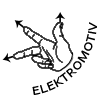 |
Elektromotiv | DPW | Manufacture of heavy electrical plant |
 |
Hyssengurgel | DLEP | Manufacture of hydraulic and pneumatic systems |
 |
Jollyvision | DEO | Manufacture of electronic media and communication devices |
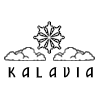 |
Kalavia | KDF | Manufacture of government aircraft |
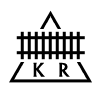 |
Kalgachi Railways | DPW | Rail transport |
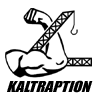 |
Kaltraption | DPW | Manufacture of construction, agricultural and logging machinery |
 |
Ketgachia | DLEP | Licensed manufacture of foreign automobiles (80% of profits remitted to Ketshire Automotive Technologies of the Sovereign Confederation) |
 |
Medkhoz | DHPW | Agriculture and food processing |
 |
Melliphone | DEO | Production of audio and visual recording media |
 |
National Timber Complex | DLEP | Forestry, timber production, chip/pulp/paper manufacture, wood gas refinement |
 |
Neopreparat | DHPW | Microbiological solutions |
 |
Octavian Import-Export Corporation | 51 % DLEP (foreign registered) | Imports and Exports |
 |
Puckadobey Savings Bank (PSB Pachadsberg) |
DLEP | Discreet financial services for foreign clients, currency trading |
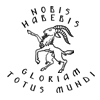 |
Reserve Bank of Kalgachia | DLEP | Gold bullion assay and stockpiling, currency minting |
 |
Silent Wonder | DEO | Publishing |
 |
Skivnikproof | KDF | Manufacture of inert military equipment |
 |
Snugtogs | DLEP | Manufacture of textiles and textile products |
 |
Trannytronics | DLEP | Manufacture of civilian board circuitry and logic systems |
 |
United Gunnery | KDF | Manufacture of barreled weapons |
 |
Whizzbang | KDF | Manufacture of cartridge and rocket munitions |
Currency
Kalgachi currency adheres to a very literal form of the gold standard, containing that precious metal physically within all its denominations. The base unit of Kalgachi currency is the Kalgarrand (kgr), a coin of 99.9% fine gold at a weight of 31.1 grams (1 troy ounce), 2mm thickness and a very small diameter of 18.08mm. Owing to its immense value and impractical ductility, the Kalgarrand coin is not often used in everyday commerce and where it is, it is invariably mounted within a protective casing. Denominations of Kalgarrand are minted as an alloy of tin with the appropriate proportion of gold content. The most valuable of these is the Half Kalgarrand, of equal weight in both gold and tin although the lesser density of the latter results in a larger coin of 22.44mm diameter. Coins of lower value retain the Half Kalgarrand's size, but with less gold and more tin as appropriate to their denomination. The differing proportions and densities of the alloyed metals give each coin a unique lustre and weight profile which aids greatly in authentication, although this variance is less discernible in lower denominations and generally requires specialised analysis such as spectrometry.
Although traditionally expressed as a fraction for high-value transactions, sub-Kalgarrand amounts are expressed decimally as Millirand (thousandths of a Kalgarrand) in everyday use.
Gold and Currency Production / Foreign Expenditure Data (10yr)
| Period | Gold mined and smelted | Gold allotted to industrial/aesthetic uses | Gold committed to Strategic Bullion Reserve | Gold exported abroad from Strategic Bullion Reserve[1] | Gold minted into Kalgarrand | Kalgarrand spent abroad from domestic circulation[2] | Kalgarrand released into domestic circulation | Kalgarrand spent abroad from Strategic Currency Reserve[3] | Kalgarrand committed to Strategic Currency Reserve |
|---|---|---|---|---|---|---|---|---|---|
| 210-219 AL[4] | 225 tonnes (of a potential 1500 tonnes) |
307 tonnes (from new gold production) |
166 tonnes | 41 tonnes | 32 tonnes totalling 1,028,938 kgr (from new gold production) |
54,302 kgr | 102,893 kgr (from newly minted currency) |
524,372 kgr | 370,000 kgr from domestic circulation; 926,045 kgr from newly minted currency |
Gold and Currency Stocks
| Year (commencement) |
Total bullion in Strategic Reserve | Total Kalgachi-assayed bullion abroad[5] | Total Kalgarrand in Strategic Reserve | Total Kalgarrand in domestic circulation | Total Kalgarrand abroad[6] |
|---|---|---|---|---|---|
| 220 AL | 397 tonnes | 247 tonnes | 37,799,837 kgr | 37,101,188 kgr | 6,366,662 kgr |
Foreign Payments
Notable Standing Payments
- 4,600 kgr per year from the Church of Kalgachia to Chicken King of the Florian Republic (since 209 AL) - restaurant franchise fees
- 22,508 kgr per year from the Kalgachi government to Benacia Command as contributions towards the joint-administration of the Inner Benacian protectorates of Lepidopterum, Northbloom, and the Upland Confederation under the Treaty of Gloomburg.
Notable Historic Payments
- 1,472,000 kgr from the Kalgachi government to Sokoku Industries of Jingdao (between 159-204 AL) - aircraft purchase and maintenance payments
- 500,000 kgr from the Kalgachi government to the Iron Company of Kasterburg (193 AL) - payment for an expansion of Gravelbottom Airport
- 87,400 kgr from the Church of Kalgachia to Chicken King of the Florian Republic (between 171-208 AL) - restaurant franchise fees
- 35,000 kgr from the Kalgachi government to the government of Kasterburg (between 170-204 AL) - airspace transit fees
Before 205 AL the majority of Kalgachia's remaining cash outflow (and a corresponding proportion of gold bullion) was paid to various enterprises of the Port of Vines via the Octavian Import-Export Corporation and the Nova English Trading Company. After 205 AL the emphasis switched to enterprises of the Batavian Confederation, much of it through the Iron Company. An substantial amount is also circulated through Kalgachia's protectorates.
- Although the precise data is unavailable, tribute payments to Benacia Command after the Treaty of Gloomburg were sufficient enough for the UGB to base its currency off the reserves thereby amassed.
Footnotes
- ^ Minus Kalgachi bullion recovered from abroad.
- ^ Minus Kalgarrand recovered from abroad.
- ^ Minus Kalgarrand recovered from abroad.
- ^ April 7th to July 15th, 2019.
- ^ Not including exported Kalgachi-hallmarked gold products such as jewellery.
- ^ Owing to the inflation of Kalgachi bullion stocks over time, conversion of Kalgarrand into foreign currency is best subjected to a temporal modifier in accordance with the varying flow of time between the Anno Libertatis and other calendars (conversion of Kalgarrand to currencies of nations operating under Ab Nortone, for instance, requiring the sum total of other variables determining the rate of exchange to be divided by three for a real-terms figure. Conversion of Kalgarrand to currencies of nations operating in uncompressed Earth time would require the rate to be divided by 36.5. The Reserve Bank of Kalgachia cannot be held responsible for inflationary events, currency crashes or bankruptcies arising from the renunciation of this advice nor, conversely, the gaming of global currency markets for personal profit by the exploitation of temporal haemorrhaging.)

